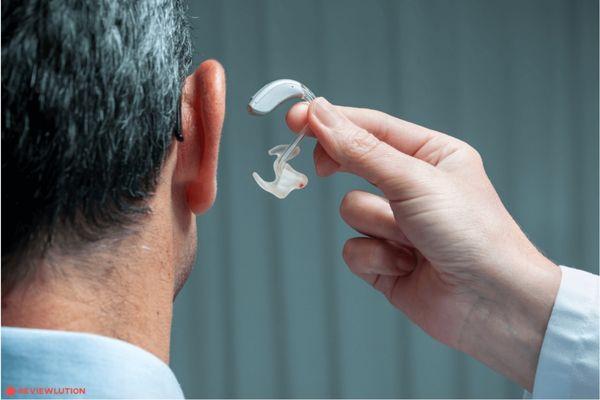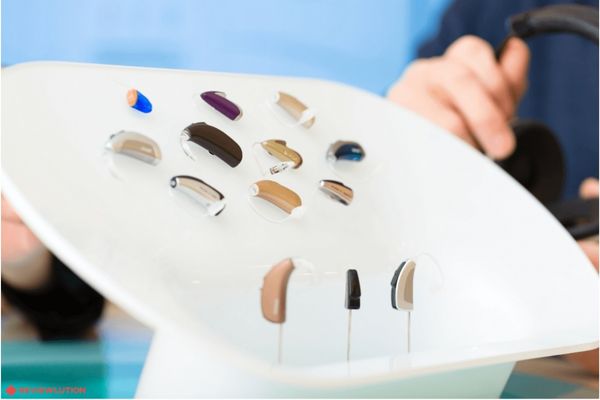Hearing Aids Price in Canada: How Much Do They Cost in 2024?
Are you in the market for a new pair of hearing aids? If so, you may be wondering how much they cost in Canada. In this post, we’ll look at Canada’s average hearing aids price and some factors that can affect the cost.
Keep reading to learn more!
How Much Do Hearing Aids Cost in Canada?
As technology advances, the prices of hearing aids drop. Hearing aids used to be very expensive, but now they can be purchased for a fraction of the cost. In Canada, there are many affordable options for buying hearing aids.
The average cost of hearing aids in Canada is around $1,000 to $4,000 per year. A number of factors can affect hearing aid prices, such as the type of hearing aid, the brand, and the features.
If you are considering purchasing a hearing aid, it is essential to research and compare prices from different dealers before making a decision. With so many options available, you are sure to find the best hearing aid price that fits your budget and needs.
Benefits and Subsidies for Hearing Aids per Province
Depending on your province, you can get discounts on hearing aids. Here’s an overview of what benefits and subsidies may apply:
Ontario
The residents of this province who are using the Ontario Health Insurance Card can receive up to 75% coverage of their hearing aids if they are eligible.
Quebec
If you live in Quebec and are eligible, you can receive complete coverage for buying new or replacing your hearing aids.
British Columbia
In this province, there are strict eligibility criteria for hearing aid coverage, making most people not eligible for a refund.
Alberta
Individuals under 18 and Albertans enrolled in full-time studies can get their hearing aids for free every five years. On the other hand, the rest of the Albertans should meet specific criteria depending on their income to get funding for their hearing aids.
Saskatchewan
In Saskatchewan, there is a charge for pursuing hearing aids. The province offers hearing tests for kids, but hearing health care for adults is available only in private clinics.
Manitoba
Manitoban kids are eligible for coverage of their hearing aids with an 80% refund from Manitoba Health.
Newfoundland and Labrador
Individuals who are under 18, are full-time students, or are in financial need are eligible for hearing aid coverage by PHAP.
Nova Scotia
Nova Scotia offers 75% coverage on hearing aids for people older than 65 who meet the income criteria.
New Brunswick
In New Brunswick, individuals with special health needs who meet the required criteria can get coverage.
Prince Edward Island
Individuals younger than 21 are eligible for hearing aid coverage in this province.
All in all, you have plenty of coverage options if you’re a Canadian citizen looking for help with your hearing. Now it’s time to check out the factors that will affect their price.
Factors Determining the Price of Hearing Aids
Hearing aid types and costs depend on several factors. When choosing a device like this, every individual must pay attention to their health, personal needs, and budget limit. Let’s look at the factors determining the cost of hearing aids.
Lifestyle Needs
One of the main factors determining the price of hearing aids is the person’s lifestyle. If someone needs to use hearing aids for their work or daily activities, they will likely need to spend more on their devices than someone who only uses them occasionally.
Various types of hearing aids are available on the market, so it is essential to consult a professional to find out which style best suits your lifestyle needs.
For example, Widex hearing aids cost between $1,900 and $4,600, but the total amount depends on many factors, so you should also consider what suits your everyday activities and personality the best.
Contribution to Health
The most crucial factor in determining the price of hearing aids is their contribution to overall health. In general, hearing aids are very effective at improving communication and quality of life for those with hearing loss.
In addition, they can also help to prevent or delay other health problems that are associated with hearing loss, such as cognitive decline and depression. As a result, hearing aids significantly contribute to overall health and well-being.
Occupation and Cosmetic Concerns
Individuals who work in professions that require them to use their hearing extensively are more likely to experience hearing loss and thus may be willing to pay more for hearing aids.
Additionally, people who are concerned about their appearance may also be willing to pay more for less visible hearing aids. This is especially true for those who work in occupations where appearance is important (e.g., actors, models). Thus, occupation and cosmetic concerns are two critical factors that can influence hearing aid prices.
The Horizon mini hearing aid is an excellent example of a small and stylish hearing device.
Style and Technology of Hearing Aids
Hearing aids vary in price depending on the style and technology. In-the-ear (ITE) hearing aids are the least expensive, while behind-the-ear (BTE) models tend to be more expensive. The most technologically advanced hearing aids, such as those with digital signal processing (DSP), can cost several thousand dollars.
Learn more: How Much Is an Eye Exam in Ontario in 2022?
Additional Features to Consider
When you’re ready to take the plunge and purchase hearing aids, there are a few more things you’ll want to keep in mind. Read on!
Battery
Two main types of batteries are used in hearing aids: disposable and rechargeable. Disposable batteries are the most common type and can be found at any drugstore or grocery store. They come in various sizes, depending on the hearing aid, and typically last around 5-7 days before needing to be replaced.
Rechargeable batteries are becoming more popular for hearing aids as they are more environmentally friendly and can save you money in the long run. However, they are initially more expensive than disposable batteries and must be recharged every few days.
For instance, Oticon hearing aids cost around $2,100, which is not expensive for a rechargeable set that lasts up to 30 hours.
Wireless Connectivity
One of the most important things to consider when buying hearing aids is wireless connectivity. While some hearing aids still require a physical connection to a sound source, newer models offer Bluetooth or other wireless connections that allow you to stream audio directly from your phone or other devices.
This can be a huge benefit if you want to listen to music or watch videos without worrying about wires getting in the way. Hearing aids with Bluetooth can cost around $1,200 to $7,800.
Advanced Hearing Aid Features
Some people may require a hearing aid specifically designed for their needs, while others may simply need a hearing aid that provides the basics. Some of the most common features to look for in hearing aids include volume control, noise reduction, and directional microphones.
Sound Quality
Various factors can affect sound quality, and it is vital to be aware of them before making your final decision.
One of the most significant factors affecting sound quality is your choice of hearing aid. There are two main types of hearing aids – digital and analog. Analog hearing aids have been around for longer, using an electronic signal to amplify sound. Digital hearing aids, on the other hand, use a computer chip to convert sound into digital information. This ensures that the sound is accurately amplified.
Signia is considered one of the hearing devices with the best sound. Usually, Signia hearing aids cost around CA$1,200 per single aid.
Online vs. Physical Retailer
Regarding purchasing hearing aids, there are two main options: online retailers and physical stores. Both have their own set of pros and cons, so it’s essential to consider which option is best for you.
Physical stores typically have a larger selection of products and trained staff who can help you choose the right product.
On the other hand, online retailers often have lower prices. However, note that online retailers are mostly selling Personal Sound Amplifying Products, which are a bit different than traditional hearing aids. In fact, PSAPs are generally used to heighten background noises for people who don’t experience hearing loss issues, as opposed to helping people with medical issues.
That being said, you should be very careful when purchasing over-the-counter hearing aids, as they can cause serious damage without a hearing test performed by a professional.
Finishing Thoughts
So what’s the takeaway from all of this? Prices for hearing aids in Canada vary, and many factors go into determining how much you’ll pay. If you’re looking for a new pair of hearing aids, it’s important to do your research and find the best deal for you. And if you’re not happy with the price you’ve been quoted, don’t be afraid to negotiate!
Read more: 19+ Crucial Health Statistics Canada
FAQ
Yes, they can be expensive. The average cost of a single hearing aid in Canada is from $1,000 to $4,000. The price of a hearing aid can vary depending on the type and brand of the device.
It depends on the province. In some provinces, hearing aids are entirely covered by provincial healthcare, while in others, copayment is required.
Yes, you need a prescription for hearing aids in Canada. The prescription must be obtained from a licensed audiologist or physician.
If you have difficulty hearing, an audiogram can help identify the severity and type of hearing loss you have. With a prescription, the hearing aids price in Canada may be lower or covered by the province’s governmental organs.
Hearing aids usually last for around five years. However, this can vary depending on the type of hearing aid, how often it is used, and how well it is cared for.
Many factors contribute to the longevity of a hearing aid, so it is essential to consult with a hearing healthcare professional to get the most accurate estimate for your situation.












